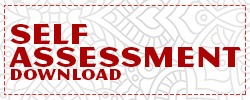DESAIN PESAN PERSUASIF YAYASAN ARSITEK KOMUNITAS INDONESIA PADA KORBAN BENCANA ALAM DI KOTA PALU
DOI:
https://doi.org/10.22487/ejk.v9i3.400Kata Kunci:
Persuasive Message Design, Yayasan Arsitek Komunitas Indonesia, Natural Disaster VictimsAbstrak
This research was motivated by the phenomena of the earthquake, tsunami and liquefaction that occurred in September 2018, which resulted in many people losing their homes, including in the coastal area of Mamboro, North Palu District, Palu City. The purpose of this research is to find out how to design persuasive messages by the Indonesian Non-Governmental Organization Foundation for Community Architects (Arkom). victims of natural disasters in Palu City. This study used a qualitative research method with a case study approach, through in-depth interviews and field observations. The number of informants in this study were 5 people who had been selected through a purposive sampling technique. The results showed that in designing persuasive communication messages carried out by the Non-Governmental Organization Foundation for Community Architecture after the earthquake, tsunami and liquefaction in Mamboro Village, North Palu District, Palu City, it was by using community leaders as media in conveying messages to the communicant, and the messages conveyed by the communicator to the community is designed effectively so that the message can be understood by the communicant during the activity.







